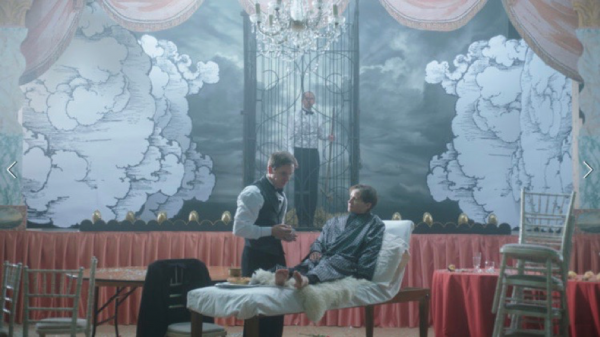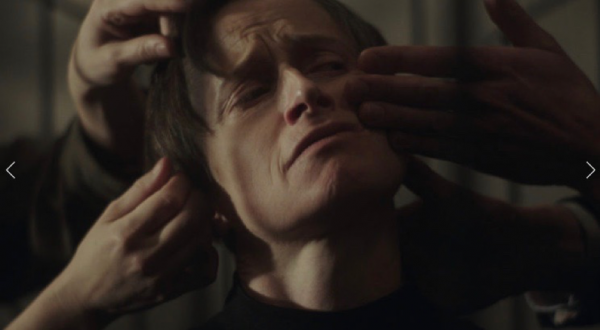On March 1st 2019, I convened a workshop on the visceral body with Professor of Psychology, Manos Tsakiris. Exploring the cultures of interiority and interoception (the subjective awareness of what is happening inside the body), papers drew on a wide range of historical, social, psychological, neuroscientific and artistic considerations. They explored the visual history of interiority – from medieval anatomy to 20th-century brain scans – and considered the relationship between subjectivity and objectivity, the meanings of ‘self’ and society, and how the two connect.
What struck me, as stories wove from Jack Hartnell’s account of the 13th-century Abbey of Maubisson to Katerina Fotopolou’s research at the 21st century London Neuropsychoanalysis Centre, was the different ways bodily subjectivity has been accessed and interpreted objectively. Most notably from the 19th century, with the emergence of scientific medicine, but also through the distancing lens of the other, as I discuss in my book, This Mortal Coil. Perceptions of emotions are no different. Modern neuroscientific accounts of emotion tend to focus on the brain rather than the heart – replacing the cardiocentric model of emotions that dominated Western medicine for two centuries. But the viscera are back: heart-brain and gut-brain interaction are becoming reintegrated into new interoceptive models.
Despite much historical interest in the body, however, the embodied experience of loneliness has been neglected. Embodied emotions tend to focus on (often over-simplified as) ‘single’ emotional states: anger, fear, hate, sadness. Complex states like loneliness are far harder to identify, both contemporaneously and in historical perspective. I have argued, in a 2018 article for Emotion Review, that loneliness is not a single affective state, but a complex emotion cluster, with many manifestations. Lonely people are not sure what they feel because it shifts so readily between – say – anger, sadness, resentment and jealousy [1]. Since we can’t necessarily perceive emotions as they manifest in conventional physical expressions, we can – as contemporary observers and historians – perceive them through embodiment ‘proper’, in the body as it engages in and through the material world.

We can see this at work in the artist Daria Martin’s film, A Hunger Artist, which is based on the Franz Kafka short story of the same name (1922) [2]. Kafka’s A Hunger Artist explored the author’s familiar themes of death, art, suffering and isolation. The artist starves himself for 40 days – on multiple occasions – against a backdrop of waning public interest. The final of those cycles is represented in Martin’s film, with an empathetic response from the viewer curated through careful choice of music, lighting and angles that allude to the sensory body: the hollowed-out cheeks of the artist, the sad pools of his eyes, the ringing in his ears, the heartbeat that becomes a clock marking time.
Most accounts of A Hunger Artist focus on what it tells us about the real-life spectacle of hunger artists in 19th-century Europe and America (the inspiration for David Blaine), or about the role of the artist, swallowed up by society. I am interested, rather, in what it tells us about embodied loneliness, and the lonely body in the material world. Viewers eat and drink and make merry, performing togetherness while the artist is alone. By contrast to the dowdy colours of the artist, the audience is suffused with colour, their mouths lascivious, their eyes glazed.
The artist is denied the humanity of belonging; his hearing worsens, he is too weak to stand. He is starving not only for food, but also for human contact, eating with others being just one of the rituals of togetherness that allow us to feel part of society. It is not just the bars that keep the hunger artist from the realm of the other, but also his internalised sense of disconnect. The single, saving moment of humanity is when a young girl approaches the cage, reaches out her hand to touch the artist. Touch, the most neglected of the senses when it comes to emotion, provides a moment of hope and connection, literal and symbolic, that is all too fleeting. Finally, the skeletal figure, increasingly separated from the realm of the human, slips beneath into a bed of straw, before transforming into a sleek black panther.

The hunger artist is not solitary, but he is lonely; his psychological imprisonment as manifest as his physical separateness. Looked at but never seen, the artist’s loneliness is conveyed by shapeless clothing, downcast gestures, a physical and emotional retreat from the world of the human. People look at the artist, but do not see ‘him’, they see the body as object, as spectacle. The empathic gaze needed for social belonging is absent. Loneliness can be a prison, when it is unwanted It can occur in social isolation as well as in a crowd.
Martin’s film makes us think about the placing of the individual, lived body in relation to others, and of the different gazes in which the lonely body can be positioned. “I always wanted you to admire my fasting”, the artist says to the impresario at the end. But he has not been admired; he has been the subject of scorn, derision, pity, and most withering of all: indifference.
[1] See also my article, ‘History, theory and the ‘emotion cluster’: a useful analytical tool?’ (forthcoming). A link to that article will be posted here when available.
[2] I discuss Daria Martin’s A Hunger Artist in more detail in a forthcoming article. A link to that article will be posted here when available.
Fay Bound Alberti (@fboundalberti) is a UKRI Future Leader Fellow at the University of York. Her next major book, A Biography of Loneliness, is forthcoming in 2019.